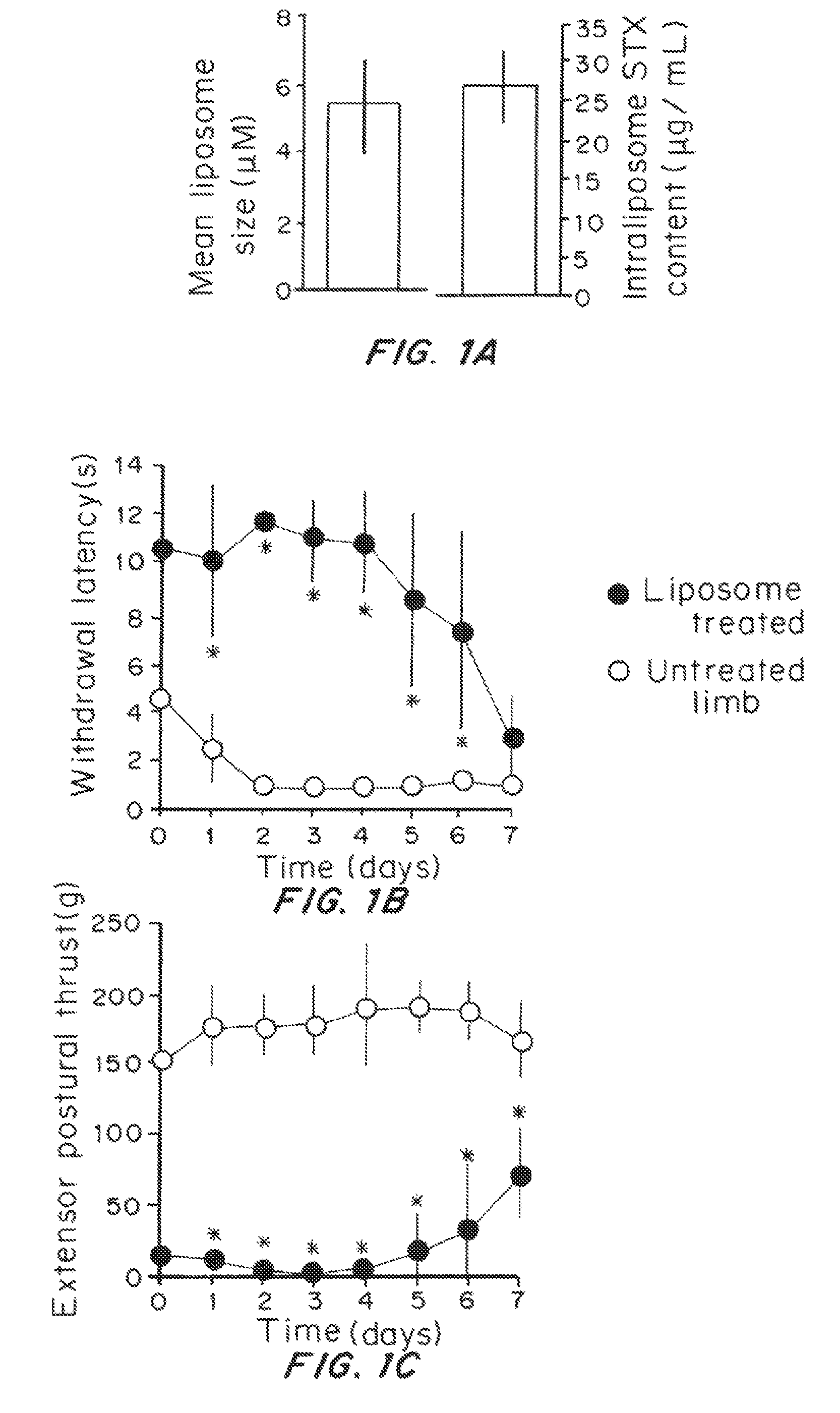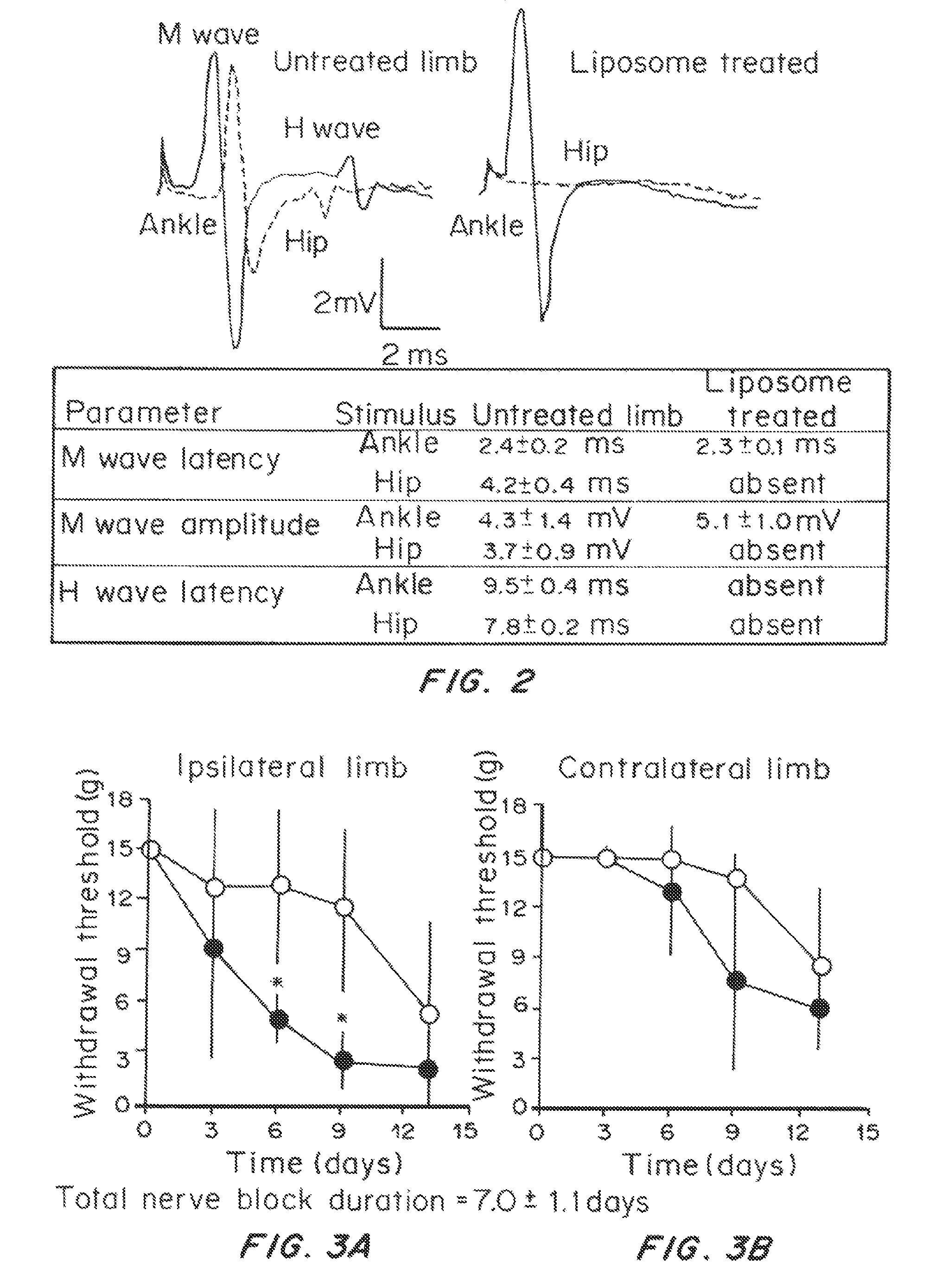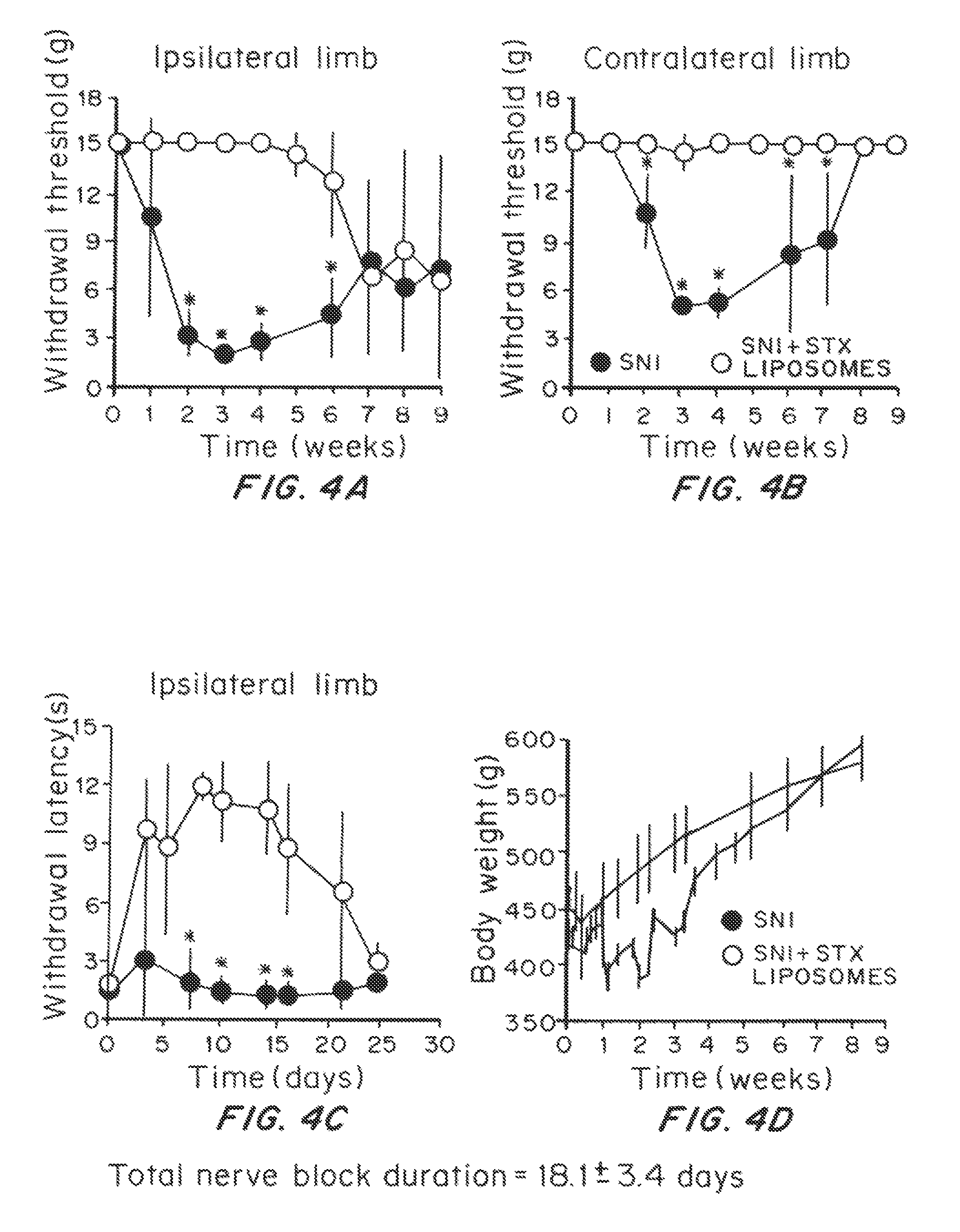Formulations and methods for delaying onset of chronic neuropathic pain
a technology of chronic neuropathic pain and composition, which is applied in the direction of nervous disorders, drug compositions, organic active ingredients, etc., can solve the problems of unsatisfactory pain control of patients, unsatisfactory pain management, undesirable side effects, etc., and achieves no local toxicity, no local toxicity, and rapid nerve block
- Summary
- Abstract
- Description
- Claims
- Application Information
AI Technical Summary
Benefits of technology
Problems solved by technology
Method used
Image
Examples
example 1
Effect of Prolonged Suppression of Neuronal Activity in the Injured Nerve by STX-Containing Liposomes on the Onset of Chronic Pain in the Spared Nerve Injury (SNI) Model
[0055]Liposome Preparation
[0056]Liposomes were produced by the thin lipid film technique, using 1,2-distearoyl-sn-glycero-3 phosphocholine (DSPC) and 1,2-distearoyl-sn-glycero-3-phoshatidylglycerol (DSPG) and cholesterol. DSPC:DSPG:cholesterol:dexamethasone (3:1:2:0.0001 molar ratio) were dissolved in a mixture of warm chloroform and methanol (9:1 v / v). The lipid mixture was dried in a rotary evaporator (BUCHI Labortechnik AG, Switzerland) at 60° C., to obtain a thin lipid film layer. The vacuum pressure within the rotary evaporator was maintained at 480 torr for 20 minutes and then gradually decreased to 20 torr over a period of 30 minutes. Warm t-butanol was used to reconstitute the lipid film followed by immediate immersion in liquid nitrogen. The lipid mixture was then lyophilized for at least 24 hours and the re...
PUM
| Property | Measurement | Unit |
|---|---|---|
| weight | aaaaa | aaaaa |
| weight | aaaaa | aaaaa |
| vacuum pressure | aaaaa | aaaaa |
Abstract
Description
Claims
Application Information
 Login to View More
Login to View More - R&D
- Intellectual Property
- Life Sciences
- Materials
- Tech Scout
- Unparalleled Data Quality
- Higher Quality Content
- 60% Fewer Hallucinations
Browse by: Latest US Patents, China's latest patents, Technical Efficacy Thesaurus, Application Domain, Technology Topic, Popular Technical Reports.
© 2025 PatSnap. All rights reserved.Legal|Privacy policy|Modern Slavery Act Transparency Statement|Sitemap|About US| Contact US: help@patsnap.com



